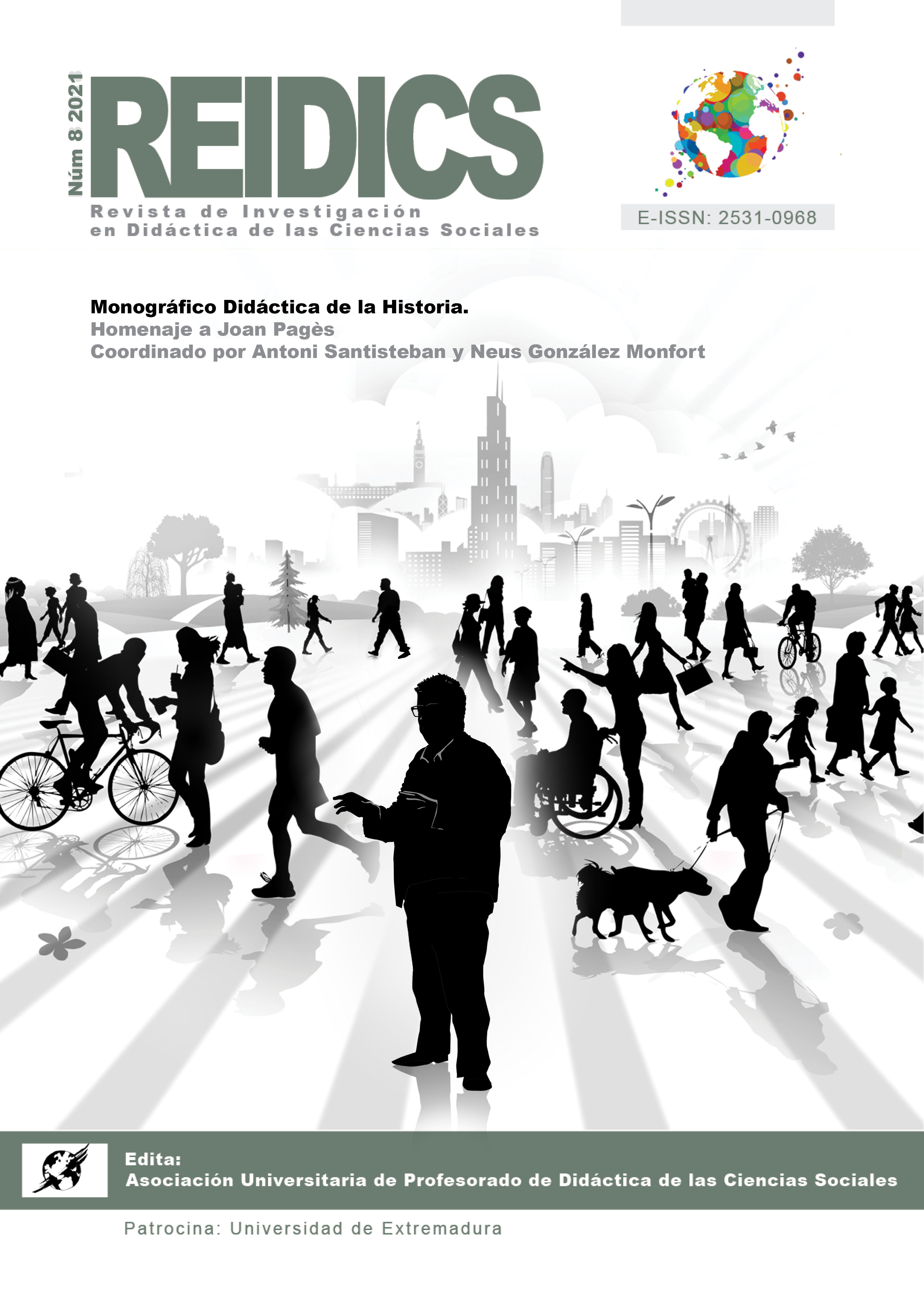Teaching practices in the teaching of history. An analytical proposal based on a case study
DOI:
https://doi.org/10.17398/2531-0968.08.141Keywords:
teaching, history, teacher, practices, case studyAbstract
Teaching practices (knowledge, gestures, behaviors, actions, senses, representations, ideas, affections and emotions) are keys in the teaching of history, much more than the curriculum or educational materials. Therefore, it is relevant to understand the dimensions that make up its configuration. Based on a case study and a particular thematic clipping, an analysis of various concurrent dimensions will be proposed that, without being the only ones are relevant. It is about: the context (in its multiple scales: socio-historical, political, memorial, school, institutional and classroom), the official proposal (educational regulations, curricular designs), students, materiality as well as their own teachers (with their biographies, positions, training, etc.) and their know-how, the one they build and deploy on a day-to-day basis. Thus, this proposal intends to know and recognize the teaching activities to strengthen the work of the teachers themselves as well as to collaborate in the initial and continuous training, giving rise to a significant feedback between teaching and research.
Downloads
Published
Issue
Section
License
Aquellos autores/as que tengan publicaciones con esta revista, aceptan los términos siguientes:
- Los autores/as conservarán sus derechos de autoría y garantizarán a la revista el derecho de primera publicación de su obra, el cual estará simultáneamente sujeto a la Licencia de reconocimiento de Creative Commons 4.0 BY-NC-SA que permite a terceros compartir la obra siempre que se indique su autor y su primera publicación en esta revista.
- Los autores/as podrán adoptar otros acuerdos de licencia no exclusiva de distribución de la versión de la obra publicada (p. ej.: depositarla en un archivo telemático institucional o publicarla en un volumen monográfico) siempre que se indique la publicación inicial en esta revista.
- Se permite y recomienda a los autores/as difundir su obra a través de Internet (p. ej.: en archivos telemáticos institucionales o en su página web) antes y durante el proceso de envío, lo cual puede producir intercambios interesantes y aumentar las citas de la obra publicada. (Véase El efecto del acceso abierto).
- Los autores y autoras han respetado la política de autoría de esta revista.




